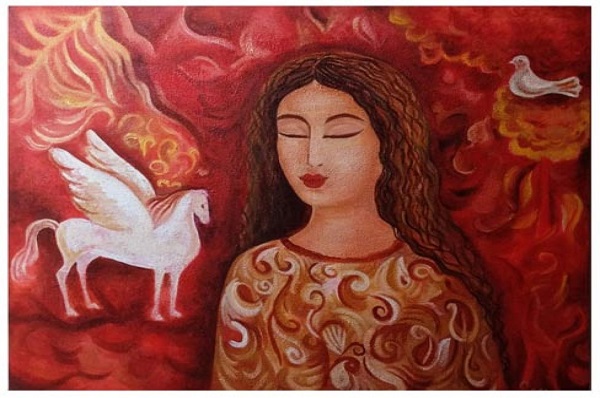With the urgency that can very well be termed as epitomizing the urgent need to control climate change and the fast pace at which the environment is deteriorating, Indian artists have taken it as their task to use their work as a potent tool for environmental advocacy. They are not only artists of beauty; they are also social change agents using their creations to attract attention to environmental problems, promote sustainability, and inspire individual and group action. These are some of the effective means whereby Indian artists are using activism and artistry for environmental causes.

1. Creating Environmental Art Installations
Indian artists profoundly address ecological issues through their environmental art works, which are frequently made of natural materials or placed inside of natural landscapes. In addition to aesthetic value given to the space they occupy, these installations teach people how close two aspects of existence-that of human beings and the environment-are. Artists like Shilo Shiv Suleman use the natural world as both a canvas and medium; whether stones, leaves, or bamboo are found in nature and used accordingly. Their beautiful storytelling challenges one’s perception into how to relate with the natural world again. It encourages people to think about such environmental issues as pollution of water, deforestation, and global warming in public space by bringing life to places in the form of interactive experiences.
2. Use of Environment-Friendly Materials
Environmental art is basically sustainability oriented, and many Indian painters nowadays work with more and more ecological techniques. While artists choose natural pigments, repurposed materials, and biodegradable chemicals, they avoid waste while speaking about responsibility for the environment. Atul Dodiya and Subodh Gupta are two of the best known artists, who creatively put recycled material into their installations and sculptures: By using eco-friendly materials, they reduce their environmental impact and serve as a model for the larger artistic community, demonstrating that artistic expression and environmental conservation can coexist.
3. Collaborating with Local Communities
In India, community interaction is a fundamental component of environmental art. In order to address environmental issues and rely on traditional knowledge, artists frequently work in conjunction with local communities. Through direct engagement with these communities, artists contribute to elevating their voices and promoting a collective sense of accountability for the land and its assets. These partnerships support sustainable practices at the local level by acting as platforms for environmental empowerment and education in addition to being artistic endeavors.
4. Using Art as a Medium for Advocacy
Indian artists are actively championing environmental policy changes through their art, which has long been a potent medium for dissent. Through artistic expression of the effects of pollution, habitat loss, and climate change, artists can sway public opinion and pressure decision-makers to prioritize ecological issues and pressure decision-makers to give ecological issues top priority. For example, the environmental activist and photographer Ravi Agarwal successfully combines his advocacy for less polluted, more sustainable methods with his artistic expression by using his platform to chronicle the harmful consequences of industrial pollution on nearby water bodies.
5. Climate Change Themes in Art
As climate change is one of the burning issues the world is facing, artists are trying to reflect upon the same through their works. Just like other Indian painters, Manisha Gera Baswani also does effective and thought-provoking work narrating the changes climate change is bringing into ecosystems, wildlife, and human populations. These pieces inspire viewers to think about their contributions to the issue and potential solutions by addressing biodiversity loss, changing weather patterns, and rising temperatures.
6. Integrating Technology with Environmental Themes
The advent of digital technology has provided artists with new platforms to convey environmental issues. In addition to expanding their audience, artists can use digital platforms to reduce the physical waste that comes with conventional creative forms. Multimedia and digital tools are increasingly being used by Indian painters in their work to bring attention to environmental issues. These tools not only increase the art’s visual impact but also involve younger, tech-savvy audiences and motivate them to take up environmental causes.
7. Documenting Environmental Changes
Certain famous Indian artists have adopted the role of environmental change chroniclers, as art has the capacity to record changes across time. The vulnerability of natural ecosystems is brought to light by these artists, who capture the effects of pollution, urbanization, and climate change. Alisha Dutt Islam, for example, studies biodiversity and the minute ecological changes brought about by human activities. Her creations offer a graphic record that acts as a sobering warning of what happens to us if environmental degradation goes unchecked.
Summing It Up
Indian artists have a more important than ever role in raising environmental consciousness in the quickly changing world of today. They are fusing creativity and activism to spark a movement towards sustainability, from employing eco-friendly materials to making climate-aware public art. Their effort improves the world’s health and consciousness in addition to making it more beautiful. Indian painters are inspiring us all to think, participate, and take action for the environment by demonstrating through their vision and commitment that art can be a potent force for environmental change.



